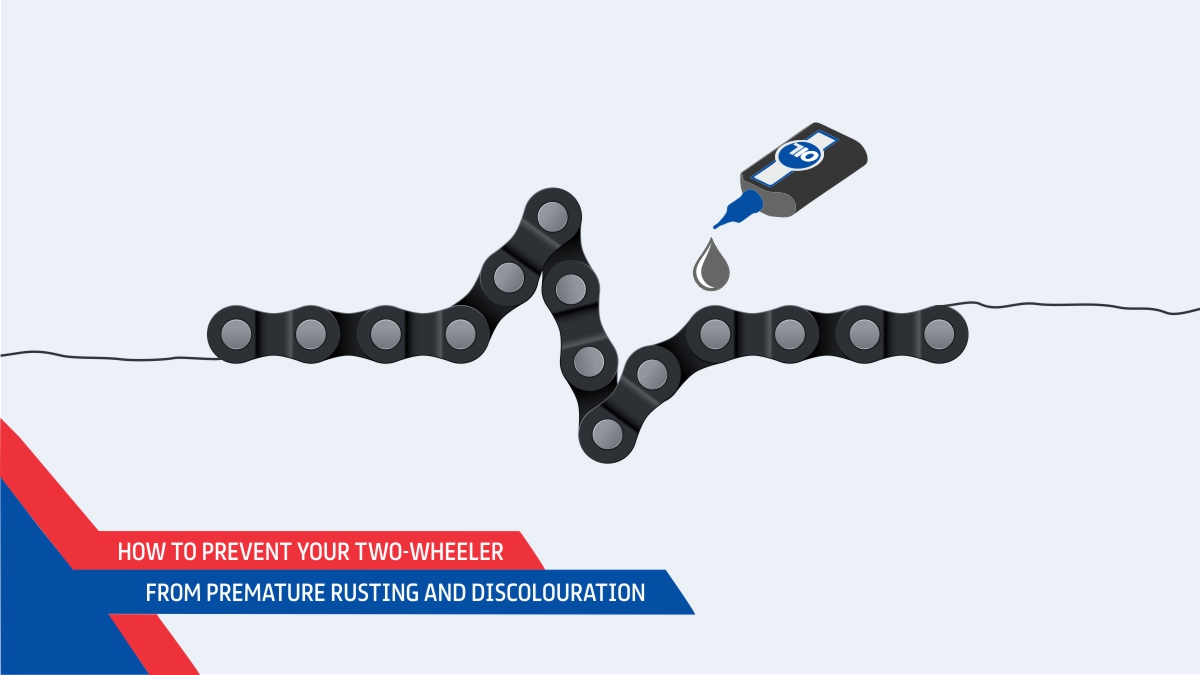Save for some areas, most parts of India experience harsh weather for a good part of the year. Most parts of our country simply don’t get to enjoy anything that’s mild. It either gets too hot or it rains too much for three quarters of a year! Extended exposure to such climatic conditions can take a toll on many things, and just like our skin, signs of ageing can show up our machines too.
For example, if you live close to the Sea, the moist air which carries traces of salt with it will nibble at all things made of metal and speed up the process of rusting. The same holds true if you live someplace where it rains too much. On the other hand, the harsh Sun will easily take away the sheen of the paint and make your two-wheeler look pale. How do you shield your two-wheeler against this atmospheric attack then? It’s rather simple if you ask us, all you have to do is follow some basics and not be careless.
Preventing Rust
Moisture isn’t good for metal. It leads to rusting, which like an infection, seeds in a small area and then spreads to other places. Like an invisible force, it slowly eats into the solidity of metal, making it hollow with time. This reaction is particularly dangerous as it can cause a vital component to become weak or even disintegrate, eventually affecting the road worthiness of your two-wheeler.
For those who live closer to the sea, the components of your two-wheeler are at a constant risk, even when it’s not raining. In such areas, it is essential that you keep the bike clean and dry as much as you can. After every wash, ensure that even the tiniest amount of moisture is either blown dry or wiped away. Pay close attention to areas which are hard to reach along with all bolting points.
Also Read: The right way to clean a Motorcycle
Keep the chain lubricated at all times as it is one the first components to attract rust. Other places where the phenomenon occurs usually is the area near the clamps which keep the handlebar in place, parts of the frame which are close to the wheel, the fuel tank and its lid in particular and the rear swingarm. Do not leave a dirty vehicle unattended for too long as you will find spots of rust already once you decide to hose it down. It is a good idea to coat your two-wheeler with an anti-rust treatment and keeping it under a ventilated, good quality cover when it won’t be used as frequently.
During the times when it rains, it is natural for the grime on the road to be transferred to your two-wheeler. But if you are too welcoming and let it stay for long, the mud and dirt will harden and trap all the moisture under it, accelerating the process of rusting many folds. Hose down your bike as quickly as you can after a ride in the rains, before ensuring you blow dry all the moisture too. Post that, make sure all exposed components which require lubrication get their fill.
If you notice a patch where the layer of paint has begun to peel and rust has started to settle in, take measures to arrest that growth immediately. Instead of using a spray can and taking care of it yourself, visit a professional who will do the job for you. If you coat the metal yourself and do a bad job of it, you may end up creating spaces for moisture to hide under the paint and accelerate the process of rusting.
Preventing Discolouration
Red turns to Pink, Green can turn into Yellow and the original colour shade of your two-wheeler will turn into something else if you leave it exposed to the Sun for too long. Filled with UV rays and other harmful elements, harsh sunlight robs the colour and finish of most painted surfaces.
The basic precaution one can take is by ensuring that the two-wheeler is always parked under some dense shade. The flipside to that is if the parking spot is under a tree, your two-wheeler can be bombed with acidic bird droppings, which are just as harmful to the paint. Pick a spot wisely. If you have no option but to park your vehicle in the open, get your bike coated with a UV protecting treatment which should help matters somewhat. You may also cover your bike if possible, however, ensure the material of which it is made will keep things cool and ventilated inside rather than making it an oven.
If spots of discolouration are visible already, visit a specialist who will fix that for you rather than investing in a complete paint job. Parking under direct sunlight will also take a toll on plastic and rubber components, besides things like the saddle. If you notice cracks on the sidewall of your bike’s tyres even when it is mostly in a parked state, you know it’s the Sun who did that.
Also Read: Tips for Two-Wheeler Maintenance and Care in Hot Weather / Summers
In addition to all the above precautions, using good quality specialty products to wash, wipe, polish and lubricate your motorcycle goes some way in extending the life of your bike’s paint. Using harsh detergents, or other products not meant specifically for motorcycle care may have an abrasive, fading effect on your motorcycle’s paint coat.
The appearance of your two-wheeler is just as important as the health of its components in order to keep it running and looking younger, for longer. Just like you take care of yourself, follow these basic care tips for your bike and its appearance will defy its age for as long as you keep it.



Thankyou, TVS!